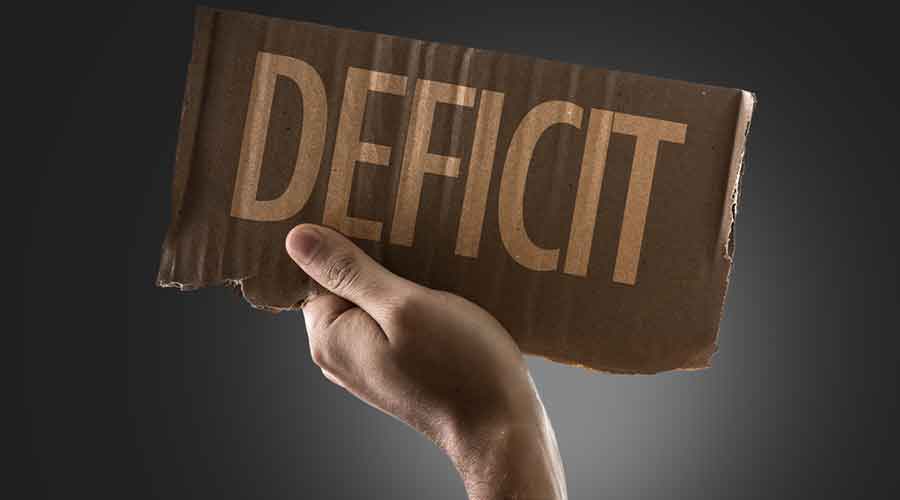The Indian economy has started to slow — hobbled by a contraction in the manufacturing sector and weakening demand.
In the third quarter of this financial year (October-December), real GDP growth came in at 4.4 per cent — bang in line with the Reserve Bank of India’s forecast.
But it left economic pundits somewhat disappointed as their consensus estimate ahead of the big macro-economic data release was 4.7 per cent.
The growth in the second quarter (July-Sept 2022) was higher at 6.3 per cent. The slowdown looks starker when compared with the same quarter a year ago when it had clocked 11.2 per cent.
The National Statistical Office, which came out with the second advance estimate of national income for 2022- 23, projected real GDP growth in this fiscal at 7 per cent — slightly higher than the RBI’s projection of 6.8 per cent — but in lockstep with the first advance estimate that came out on January 6 and was worked into the calculations for budget 2023-24.
The government’s statisticians raised the real GDP growth rate for the previous year — 2021-22 — to 9.1 per cent from the provisional estimate of 8.7 per cent last May.
The bump-up in the absolute real GDP figure to Rs 1.59 lakh crore from Rs 1.47 lakh crore in the provisional estimate — an increase of almost 8.4 per cent — did not lift the base high enough to force a cut in the growth rate. The nominal GDP for the current fiscal, which ends on March 31, was trimmed by over Rs 1.03 lakh crore to Rs 27,203,767 crore in the second advance estimate from the figure put out less than seven weeks ago in the first advance estimate.
One of the big factors for the slowdown in the third quarter has been the sharp decline in the pace of private consumption, which eased to 8.13 per cent at Rs 24.77 lakh crore from 18.3 per cent in the second quarter and over 32 per cent in the first quarter. Private consumption — which accounts for roughly 60 per cent of the GDP — is projected to grow by 7.34 per cent in the full year.
“The slowdown in private consumption could have arisen because of the spike in inflationary pressures,” said Vivek Rathi, director (research) at Knight Frank India.
“This has potentially dented personal disposable income of the consumers which, in turn, has impacted demand.”
Gross fixed capital formation — which is a proxy for investment — is projected to grow 11.2 per cent to Rs 54.26 lakh crore in 2022-23. It was higher in the previous year at 14.6 per cent.
Services-driven
The services sector continued to drive economic growth in the third quarter even though the sub-sectors stumbled a bit: trade, hotels, transport and communications grew by 9.7 per cent against 15.6 per cent in the second quarter. Similarly, the financial services sector grew 5.8 per cent compared with 7.1 per cent in the July-September quarter.
The manufacturing sector has been in the doghouse for a while, and continues to remain a source of major concern. Growth in the manufacturing sector contracted by 1.1 per cent; it was a slight improvement over the 3.6 per cent slide in the previous quarter.
“The major disappointment is negative growth in manufacturing,” Madan Sabnavis, chief economist, Bank of Baroda, said.
He asserted that growth in 2022-23 would be 6.8 per cent against the NSO’s estimate of 7 per cent. Farm sector growth remained robust at 3.7 per cent while mining grew 3.7 per cent in the third quarter.
Electricity and other utilities also continued to hum, growing by 8.2 per cent against 6.2 per cent in the July-September quarter.
The sectoral forecasts for the full year remain grim for the manufacturing sector which is expected to squeeze out a 0.6 per cent growth against 11.1 per cent in the previous year. Agriculture is expected to grow at 3.3 per cent in the full year, slightly lower than the 3.5 per cent last year.
In the services sector, trade, hotels, transportation and communication are estimated to grow at a pacy 14.2 per cent against 13.8 per cent last year.
The financial services sector is likely to grow by 6.9 per cent compared with 4.7 per cent in the previous year.
The NSO also revised its estimates for three financialyears: 2021-22, 2020-21 and2019-20 — which slightly complicated the analysis because of the base effect changes.
Real GDP for the years 2021-22 and 2020-21 now stands at Rs 149.26 lakh crore and Rs 136.87 lakh crore, respectively, showing a growth of 9.1per cent during 2021-22 compared with a contraction of 5.8 per cent during 2020-21, the NSO said.
The household sector’s share of gross savings came in at 65.3 per cent in 2021-22.
The general government’s share of gross savings — that is the Centre and the states — was at a negative 8.9 per cent. The non-financial corporations had a 35.3 per cent share in gross savings while the financial corporation’s share was 8.4 per cent.











